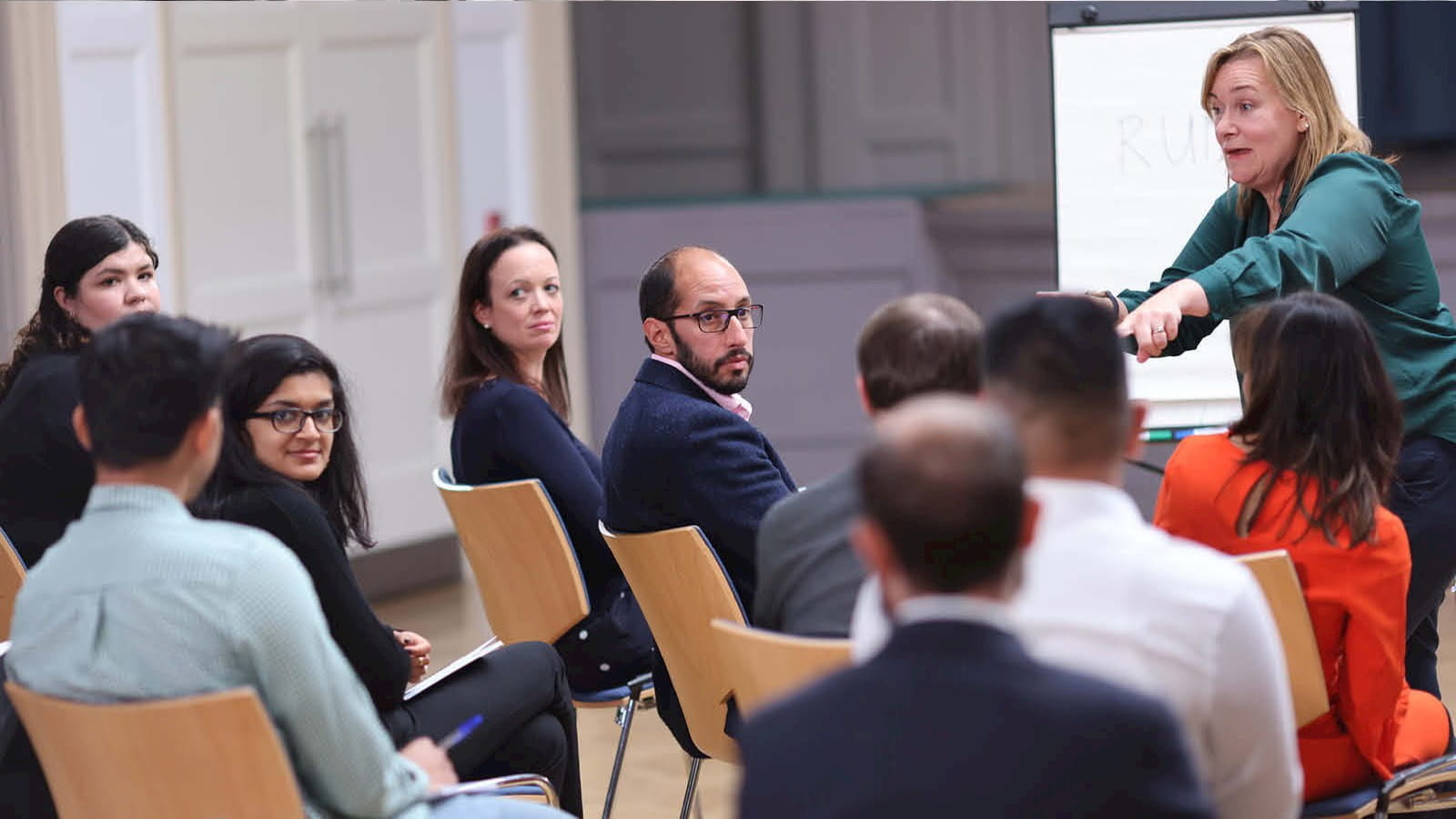Everyone should understand the importance of inclusive language, be comfortable making genuine mistakes and feel able to speak out when something unacceptable is said.
At its most basic dictionary definition, inclusive language avoids using expressions or words that may be considered to exclude particular groups of people. In practice, in the UK, this means not assuming the norm is White, male, heterosexual and able-bodied, for instance.
Adopting gender neutral language, displaying and respecting pronouns, avoiding discriminatory or stereotype-based language, feeds a sense of belonging for everyone in an organisation. And it has clear business benefits. For example, Deloitte’s Global Human Capital Trends research found that 79% of organisations agree that fostering a sense of belonging in the workforce is important to overall business success.
Deloitte encourages inclusive language in all conversations with colleagues and clients, and expects that staff communicate in a way that brings everyone into the conversation. The firm has asked employees to learn and use the pronouns of colleagues and clients and has included an option to display pronouns on their communication software tool. A tool is also available for employees to add the phonetic or preferred pronunciation of their names to their email signatures.
“An example of this in action is when we changed our language when talking about working parents,” says Deloitte’s Partner for HR, Sharron Pamplin. “We recognise and understand that one size doesn’t fit all when it comes to families and referring to ‘paternity leave’ could have masculine connotations, thus excluding other genders. We therefore use the term ‘non-birthing parents’ and first used this term when announcing we were doubling paid leave from two to four weeks in 2019.”
Pamplin says a sense of belonging is strengthened by creating an inclusive work environment that aims to allow every employee to feel true to themselves, heard and respected. “We are all responsible for creating the culture that we want. Like any other skill, becoming fluent in inclusive language takes commitment, time and practice,” she says.
Creating a sense of belonging
Fiona Daniel, CEO and Founder of D&I consultancy FD2i, explains that what we say and how we say it plays an important part in creating an inclusive workplace culture. “Inclusive language proactively recognises differences and the diversity that makes us who we are and demonstrates that we respect, value and support individuals through the language we use. This in turn enhances and accelerates a workplace culture to be more inclusive and create that sense of belonging as individuals hear themselves and see themselves in communications,” she says.
Inclusive language also encourages others to speak up in support. “The more people are aware of what is and what is not acceptable, the more they can adapt their own behaviours,” she says. “They are better placed to support others and say something when they hear non-inclusive language. And the more inclusive language is used, the more it becomes the norm.”
It also means that more people feel comfortable speaking up when they see exclusionary behaviour. Daniel says that inclusive language “empowers aspiring allies to learn, to use their privilege to lift the weight off the shoulders of those who are different [and] who tend to always do the speaking up, educating and being on the receiving end of exclusionary language”.
It’s important to remember language is fluid, therefore meanings and connotations of words can change rapidly. In effect, it is more important to apply inclusive language principles rather than always learning specific appropriate phrases.
The repercussions of non-inclusive language
The impact cannot be underestimated. Being made to feel like you don’t belong, says Daniel, “can be soul destroying, have an impact on mental health and wellbeing and confidence, and heighten that sense of being on your own, not belonging and not fitting in”.
This then often affects “work performance and in turn can leak outside work into everyday life”, Daniel says. For Krita Shah, FSO Assurance Associate at EY, exclusionary language feels demoralising. “It feels like you are being segregated or put away from the community or workplace. Even if I don’t belong to the group that has been excluded, I still think about it,” she says.
Creating diverse workplaces through inclusive language is essential to good employee relations, according to Julie Dennis, Head of Diversity and Inclusion at Acas, an independent public body focused on improving workplace relationships. “The first thing to recognise is that we all sometimes get language wrong and it’s okay to make mistakes. If you do make a mistake, apologise, correct or change what you have said, learn from the mistake and move on.
“It’s important to remember language is fluid, therefore meanings and connotations of words can change rapidly. In effect, it is more important to apply inclusive language principles rather than always learning specific appropriate phrases, as these may change in meaning over time,” Dennis says, adding that inclusive language encompasses emails, marketing material, social media, websites and other forms of communication, such as imagery. “Yes, it’s really important that when you are recruiting people into your organisation, you use language that does not exclude applicants, but by using inclusive language across all forms of communications, including internal policies, will ensure all of your people feel included.”
One-to-ones, performance management meetings, giving feedback, events and customer, client and supplier interactions; the list of where inclusive language should be used is endless, FD2i’s Daniel says. “But hopefully it is understood that inclusive language is not confined to one place, but in all interactions where communication with people through written and oral word is needed.”
Important at all levels
And it must come from the top. “It’s important that managers and leaders role model the type of inclusive working culture we want to see and using inclusive language is an everyday responsibility,” according to Jenny Baskerville, Head of Inclusion, Diversity and Equity at KPMG in the UK.
As important, if not arguably more so, are “middle managers”; those whose job it is to manage small teams to hit fundamental business goals (eg, sales targets or customer service targets), but who also have to disseminate and exemplify any cultural change initiatives, such as a D&I strategy. As a respondent to a recent BCG survey put it, “Our executive team, which is quite removed from our day, openly embraces diversity verbally. However, the people who deal with our employees need to be the ones whose hearts and minds are in this.”
Daniel makes a similar point. “For individuals to be at their best in an environment where they feel valued, respected and supported then they need to be led by inclusive leaders who demonstrate inclusive behaviours and communicate using inclusive language.”
Managers and leaders using inclusive language will be also more approachable, relatable and respected, says Sam Tasker-Grindley, Head of Advisor Success at Swoop Funding, a service to help businesses compare different funding options. “They will be able to get more out of their teams and will be able to build an environment that can bring the best out of people. It can allow people to feel like they can be themselves. And when you can be yourself, you are more likely to be happy. A happy team will most likely lead to a productive team and one that is more likely to go above and beyond,” he says.
Daniel sums it all up by saying, “When people feel respected in an environment where inclusive language is the norm, managers will see better teamwork, collaboration, ideas and solutions through problem-solving, creativity and innovation.
“What we say definitely matters!”
“We should work hard to facilitate a safe space”

In October 2021, ICAEW and Steps Drama held a one-day diversity and inclusion workshop that used dramatic scenarios and exercises to demonstrate to participants how workplaces can get it wrong and get it right.
“The role-plays were excellent and quite thought-provoking; they were pretty realistic, and it didn’t feel generic,” says Alan Chan, Founder at Cornerstone Accounts, who attended the workshop.
“Sometimes people forget within a training environment that people are learning. This can result in people getting quite animated, offended and perhaps overly insulted if the wrong thing is said. We should work hard to facilitate a safe space.”
For Biyi Oloko, Director at international advisory firm Stephen Simeon, the workshop was an innovative approach to communicating an “essential yet marginalised message of the significance of diversity and inclusion in decision-making and implementation”. He says: “Diversity and inclusion is a very varied subject matter. There is no one-size-fits-all approach.”
Krita Shah at EY says the workshop made her think about how “we let a lot of things slide under the carpet when really we should be questioning them”.

